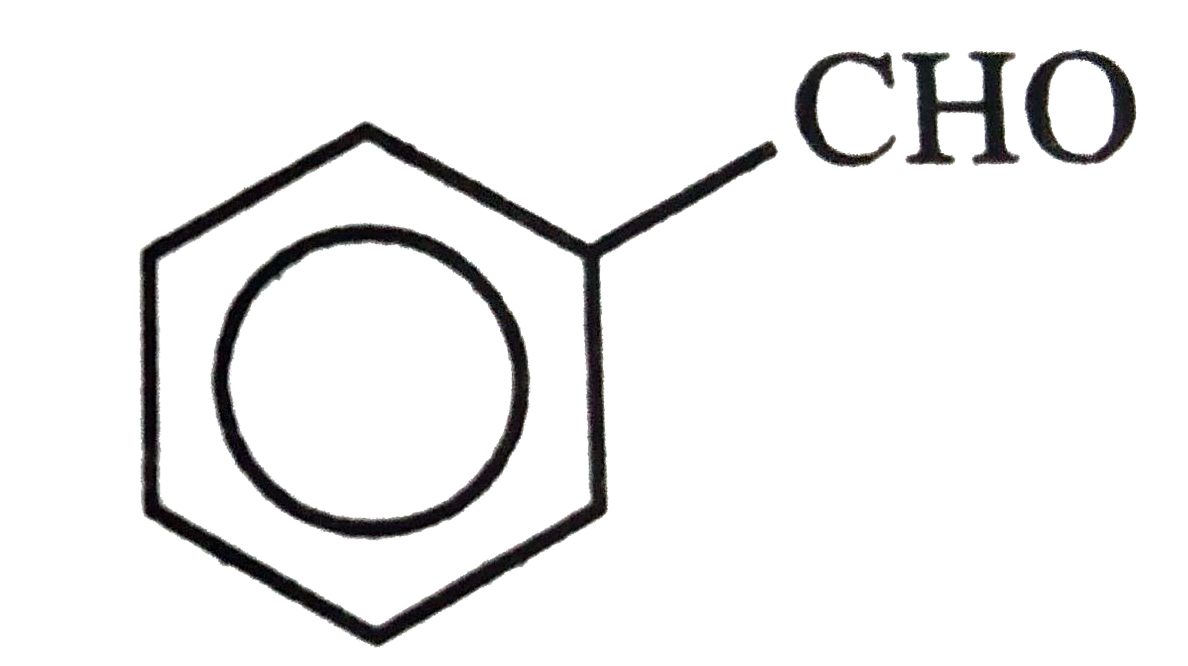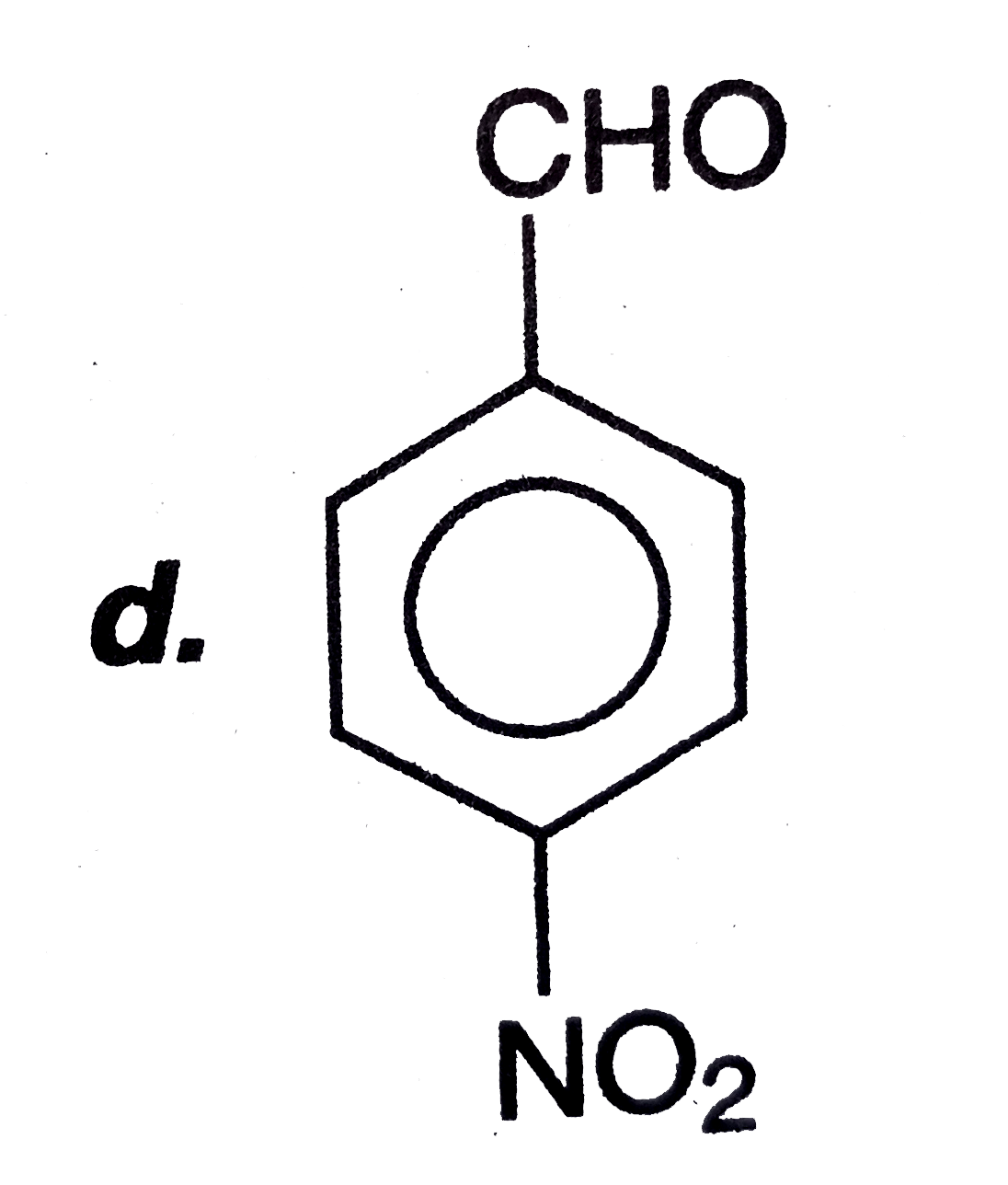Assertion : Benzaldehyde is less reactive than propanal towards nucleophilic addition reactions.
Reason : Benzaldehyde is less sterically hindred.
The correct Answer is:C
To solve the question, we need to analyze the assertion and reason provided:
Assertion: Benzaldehyde is less reactive than propanal towards nucleophilic addition reactions.
Reason: Benzaldehyde is less sterically hindered.
1. Understanding Reactivity in Nucleophilic Addition:
- Nucleophilic addition reactions involve the attack of a nucleophile (a species with a negative charge) on a carbonyl carbon (C=O) that is electrophilic (partially positive).
- The reactivity of carbonyl compounds in nucleophilic addition is influenced by the positive charge density on the carbonyl carbon.
2. Analyzing Benzaldehyde and Propanal:
- Benzaldehyde (C₆H₅CHO) has a carbonyl group attached to a benzene ring.
- Propanal (C₃H₇CHO) has a carbonyl group attached to an alkyl group (propyl).
- The benzene ring in benzaldehyde can stabilize the positive charge through resonance (the +R effect), which decreases the electrophilicity of the carbonyl carbon, making it less reactive towards nucleophiles.
3. Comparing Steric Hindrance:
- Steric hindrance refers to the crowding around the reactive site, which can impede the approach of nucleophiles.
- Benzaldehyde is not sterically hindered in the same way as propanal. However, the presence of the bulky benzene ring can create some steric hindrance compared to the smaller propyl group in propanal.
- Thus, while benzaldehyde is less sterically hindered than some other compounds, it is more hindered than propanal due to the presence of the benzene ring.
4. Conclusion:
- The assertion that benzaldehyde is less reactive than propanal is true because the resonance stabilization in benzaldehyde reduces its electrophilicity.
- The reason provided, that benzaldehyde is less sterically hindered, is false because it is actually more sterically hindered compared to propanal due to the presence of the benzene ring.
Final Answer:
- The assertion is true, but the reason is false. Therefore, the correct option is C: Assertion is true, but reason is false.
- Nucleophilic addition reactions involve the attack of a nucleophile (a species with a negative charge) on a carbonyl carbon (C=O) that is electrophilic (partially positive).
- The reactivity of carbonyl compounds in nucleophilic addition is influenced by the positive charge density on the carbonyl carbon.
- Benzaldehyde (C₆H₅CHO) has a carbonyl group attached to a benzene ring.
- Propanal (C₃H₇CHO) has a carbonyl group attached to an alkyl group (propyl).
- The benzene ring in benzaldehyde can stabilize the positive charge through resonance (the +R effect), which decreases the electrophilicity of the carbonyl carbon, making it less reactive towards nucleophiles.
- Steric hindrance refers to the crowding around the reactive site, which can impede the approach of nucleophiles.
- Benzaldehyde is not sterically hindered in the same way as propanal. However, the presence of the bulky benzene ring can create some steric hindrance compared to the smaller propyl group in propanal.
- Thus, while benzaldehyde is less sterically hindered than some other compounds, it is more hindered than propanal due to the presence of the benzene ring.
- The assertion that benzaldehyde is less reactive than propanal is true because the resonance stabilization in benzaldehyde reduces its electrophilicity.
- The reason provided, that benzaldehyde is less sterically hindered, is false because it is actually more sterically hindered compared to propanal due to the presence of the benzene ring.
- The assertion is true, but the reason is false. Therefore, the correct option is C: Assertion is true, but reason is false.
Topper's Solved these Questions
- BOOK - MODERN PUBLICATIONCHAPTER - ALDEHYDES ,KETONES AND CARBOXYLIC ACIDSEXERCISE - REVISION EXERCISES (OBJECTIVE QUESTIONS - VERY SHORT ANSWER QUESTIONS )39videos
ALDEHYDES ,KETONES AND CARBOXYLIC ACIDS
- BOOK - MODERN PUBLICATIONCHAPTER - ALDEHYDES ,KETONES AND CARBOXYLIC ACIDSEXERCISE - REVISION EXERCISES (OBJECTIVE QUESTIONS - SHORT ANSWER QUESTIONS )36videos
ALDEHYDES ,KETONES AND CARBOXYLIC ACIDS
- BOOK - MODERN PUBLICATIONCHAPTER - ALDEHYDES ,KETONES AND CARBOXYLIC ACIDSEXERCISE - REVISION EXERCISES (OBJECTIVE QUESTIONS - PASSAGE BASED QUESTIONS )10videos
ALDEHYDES ,KETONES AND CARBOXYLIC ACIDS
- BOOK - MODERN PUBLICATIONCHAPTER - ALCOHOLS, PHENOLS AND ETHERSEXERCISE - UNIT PRACTICE TEST (FOR BOARD EXAMINATION)12videos
ALCOHOLS, PHENOLS AND ETHERS
- BOOK - MODERN PUBLICATIONCHAPTER - BIOMOLECULESEXERCISE - UNIT PRACTICE TEST FOR BOARD EXAMINATION13videos
BIOMOLECULES
Similar Questions
Knowledge Check
- Question 1 - Select One
Assertion : Benzaldehyde is less reactive than propanal towards nucleophilic addition reactions.
Reason : Benzaldehyde is less sterically hindred.ABoth A and Rare true and R is the correct explanation of ABBoth A and R are true but R is NOT the correct explanation of ACA is true but R is falseDA is false and R is true - Question 2 - Select One
Which one is most reactive towards nucleophilic addition reaction?
A B
B C
C D
D
- Question 3 - Select One
Which one is most reactive towards nucleophilic addition reaction?
A B
B C
C D
D
Which one is most reactive towards nucleophilic addition reaction?
View SolutionWhich one is most reactive towards nucleophilic addition reaction?
View SolutionWhich one is most reactive towards Nucleophilic addition reaction
View SolutionWhich is most reactive towards nucleophilic addition reactions?
View SolutionWhich one is most reactive towards nucleophilic addition reaction?
View Solution
